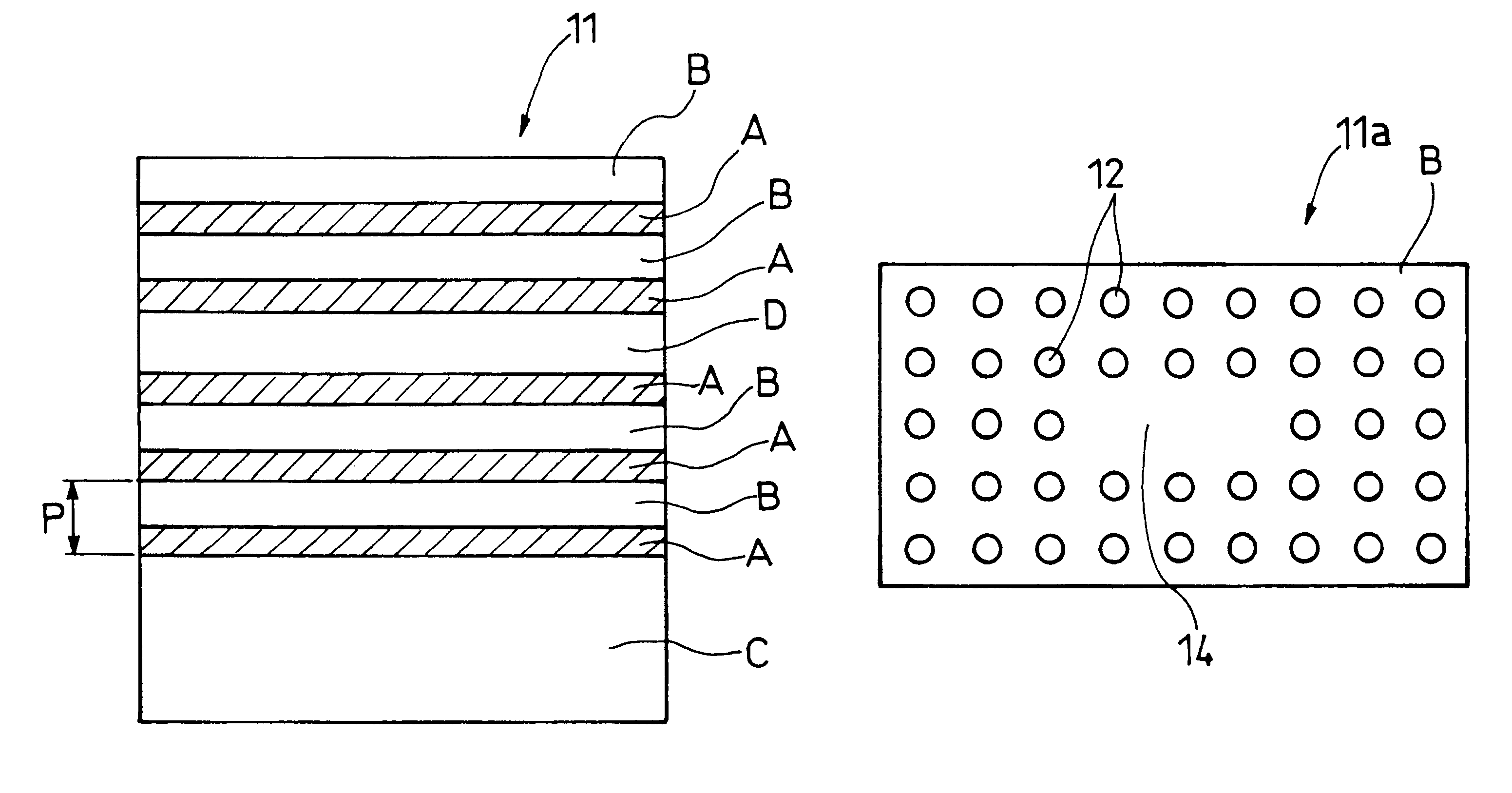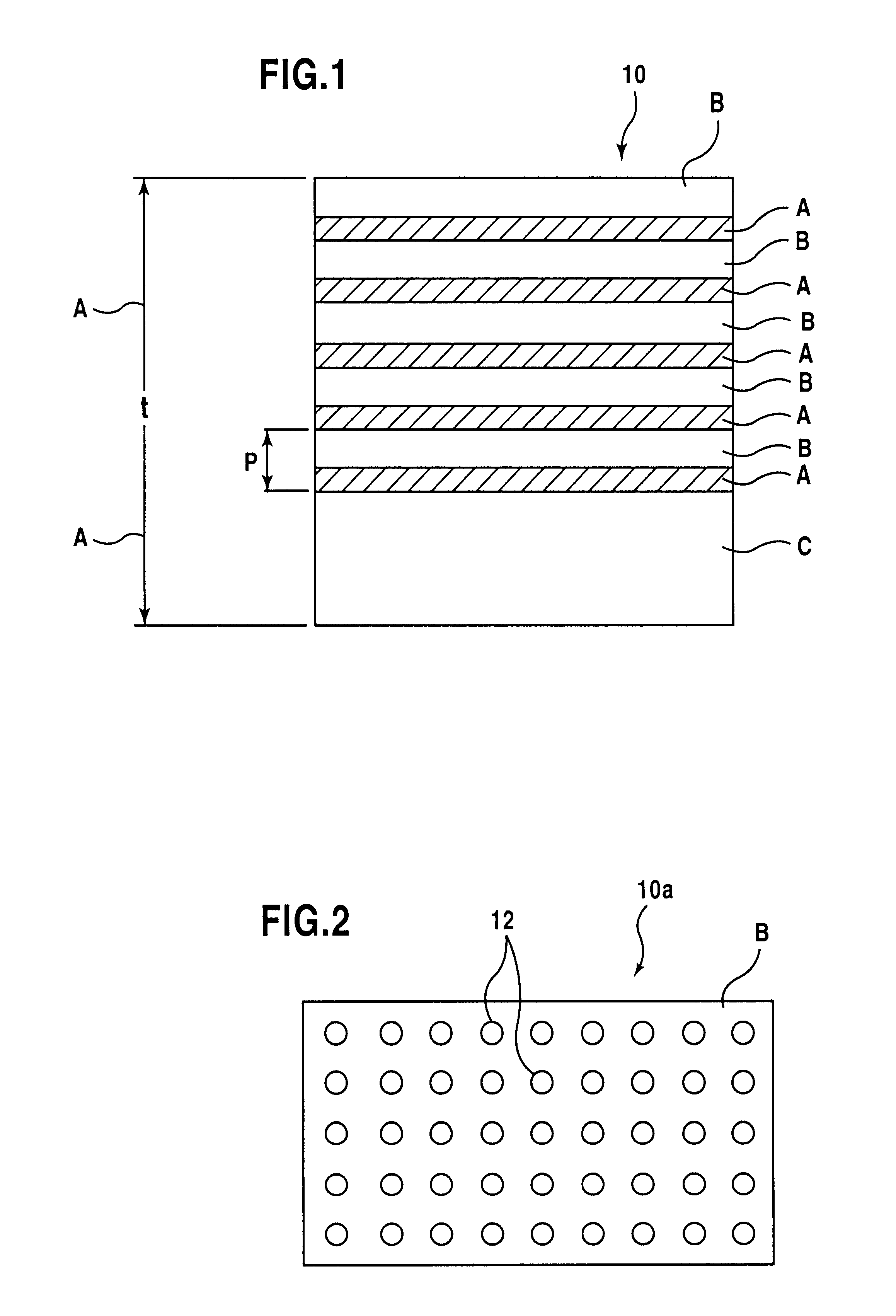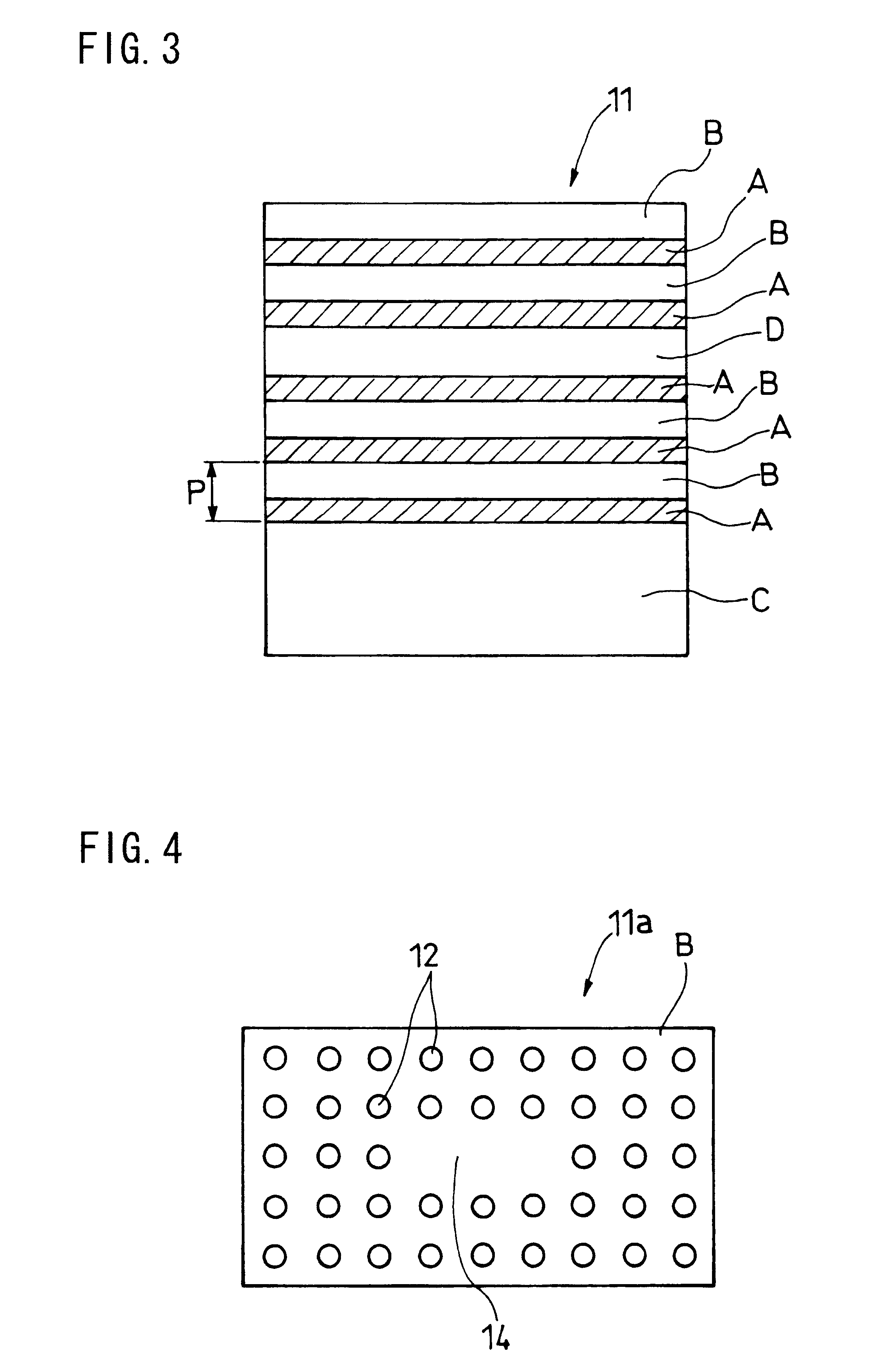Optical function device with photonic band gap and/or filtering characteristics
a technology of optical function and filtering characteristics, which is applied in the field of stacking materials, can solve the problems of affecting the quality of crystals, the inability to manufacture such a stacking structure, and the inability to use amorphous materials in semiconductor devices except for solar cells, so as to achieve the effect of reducing the manufacturing cos
- Summary
- Abstract
- Description
- Claims
- Application Information
AI Technical Summary
Benefits of technology
Problems solved by technology
Method used
Image
Examples
examples 2-4
An insulating layer (A) and a silicon layer (B) were stacked alternately on a silicon substrate (C) several times to fabricate a photonic band gap structure in the thickness direction.
The silicon layer had a thickness of 400 nm, while the insulating layer also had a thickness of 400 nm, and these alternate layers were stacked five times, i.e., the number of periods was five. A silicon oxide film (Example 2) or a silicon nitride film (Example 3) was used as the insulating layer. When light was directed to the stacked structure from a direction perpendicular thereto to measure a transmission characteristic, the stacked structure exhibited the transmittance of zero over a wavelength band ranging from one to two microns, with the silicon oxide film (example 2), thus confirming that a photonic band gap structure is provided.
It was also confirmed that with the silicon nitride film (Example 3), the photonic band gap characteristic was exhibited over substantially a similar wavelength range...
examples 5 and 6
An insulating layer (A) and a compound semiconductor layer (B) were stacked alternately on a silicon substrate (C) several times to fabricate a photonic band gap structure in the thickness direction.
The compound semiconductor layer had a thickness of 400 nm, while the insulating layer also had a thickness of 400 nm, and these alternate layers were stacked five times, i.e., the number of periods was five. GaAs was used as the compound semiconductor layer. A silicon oxide film (Example 5) or a silicon nitride film (Example 6) was used as the insulating layer. It was confirmed that the stacked structure exhibited the transmittance of zero over a wavelength band ranging from one to two microns, when the silicon oxide film was used (Example 5), and accordingly a photonic band gap structure was provided. It was also confirmed that with the silicon nitride film (Example 6), the photonic band gap characteristic was exhibited over substantially a similar wavelength range.
examples 7-11
Holes were formed at regular intervals through each of the stacked structures described above in Examples 2-6. The holes had a diameter of 400 nm and were formed at intervals of 800 nm. It was confirmed that the transmittance was zero over a wavelength band ranging from one to two microns with respect to the light transmission characteristic in the in-plane direction of the stacked structure. As a result, a three-dimensional photonic band gap can be realized in the stacked structure which exhibits the transmittance of zero over this wavelength band when light is incident on the stacked structure from any direction.
As described above, the stacked material in accordance with the present invention is advantageous in that it is free from a degraded quality of crystal, formed with a precise periodicity, fabricated without relying on the vapor phase growth method, and utilized as an optical function device. Also advantageously, the optical function device in accordance with the present in...
PUM
 Login to View More
Login to View More Abstract
Description
Claims
Application Information
 Login to View More
Login to View More - R&D
- Intellectual Property
- Life Sciences
- Materials
- Tech Scout
- Unparalleled Data Quality
- Higher Quality Content
- 60% Fewer Hallucinations
Browse by: Latest US Patents, China's latest patents, Technical Efficacy Thesaurus, Application Domain, Technology Topic, Popular Technical Reports.
© 2025 PatSnap. All rights reserved.Legal|Privacy policy|Modern Slavery Act Transparency Statement|Sitemap|About US| Contact US: help@patsnap.com



